This chive bread recipe is simple to make and full of flavor, packed with both fresh and dried chives. It's perfect served alongside soups and stews or just thickly buttered and sprinkled with salt.
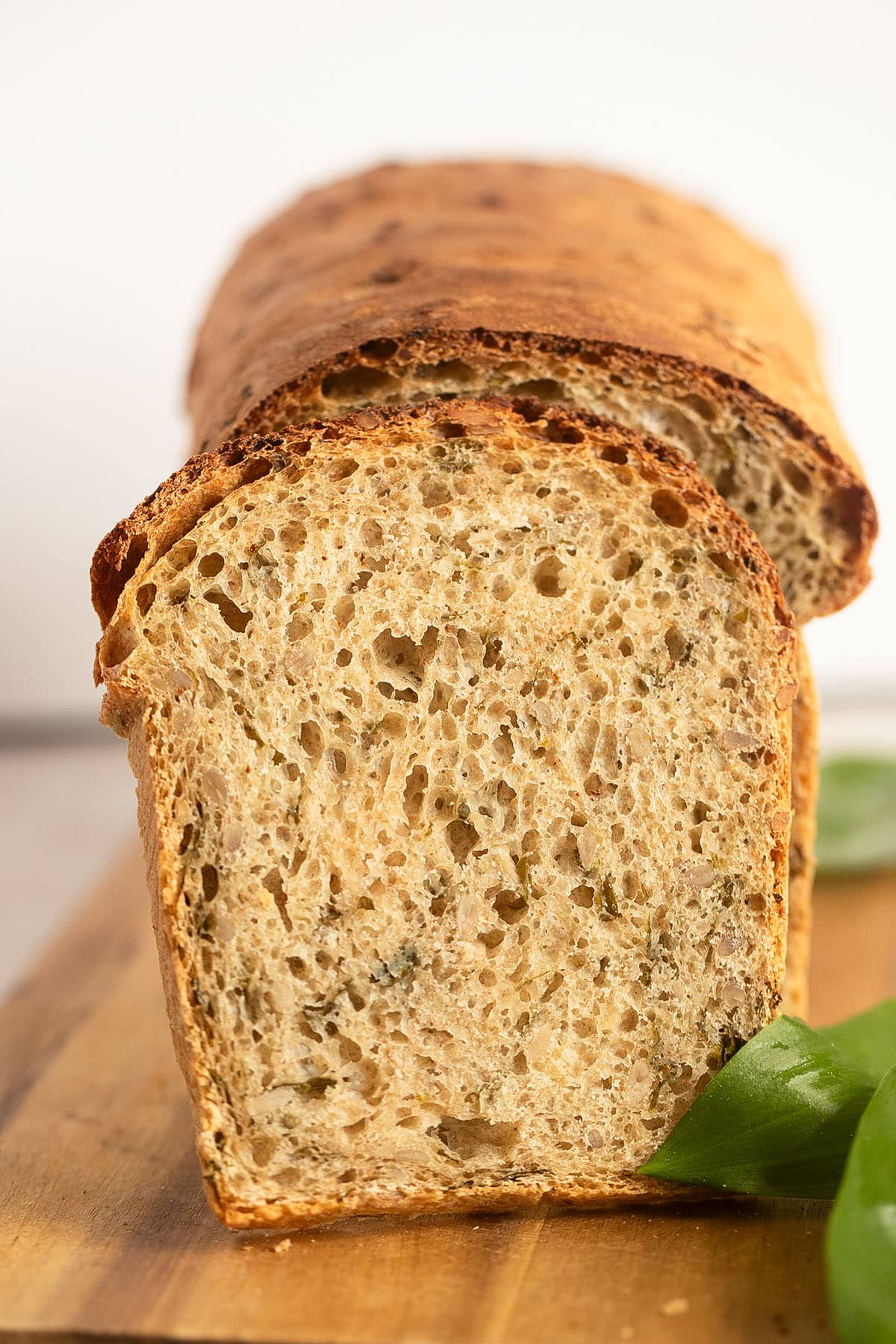
I often make this chive bread in spring when fresh chives are overflowing in my herb patch. It’s easy to make, fluffy, and hearty, and pairs well with almost anything - though I wouldn’t eat it with jam!
I love baking bread from scratch and make a loaf at least once a week. Some of our family favorites include Oat Bread without Yeast and Flaxseed Bread.
Recipe ingredients
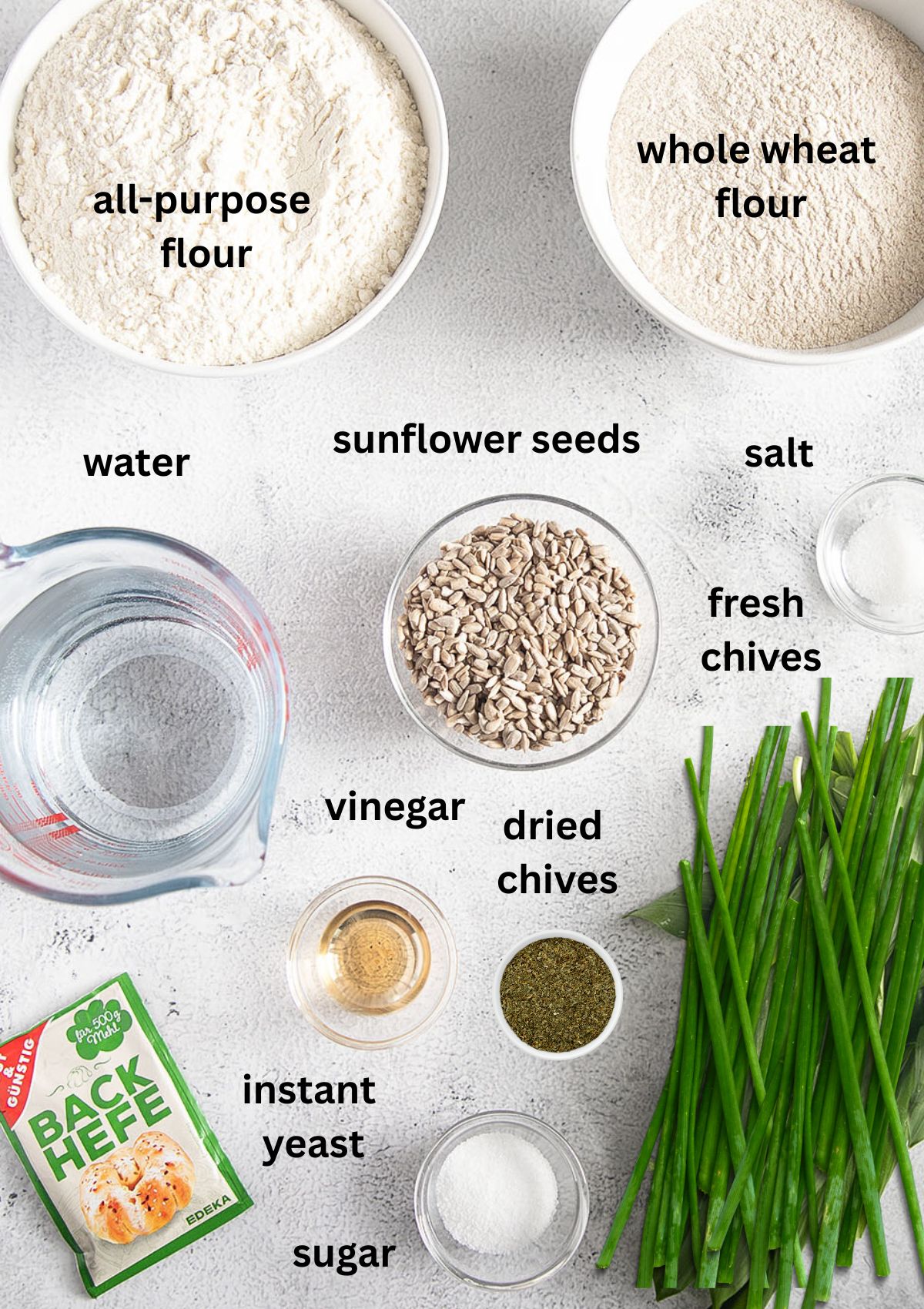
Flour: A mixture of whole wheat and all-purpose flour. Try this Guinness Wheaten Bread, too.
Chives: A large bunch of fresh chives and two teaspoons of dried chives.
Seeds: I used sunflower seeds this time, but I often bake this chive bread with other seeds, like pumpkin seeds, flaxseeds, sesame seeds, or a mixture of seeds.
Instant yeast: It is easy to use; you only need to mix it with the flour and the remaining dry ingredients before adding the water.
See the recipe card for full information on ingredients and quantities.
How to make chive bread
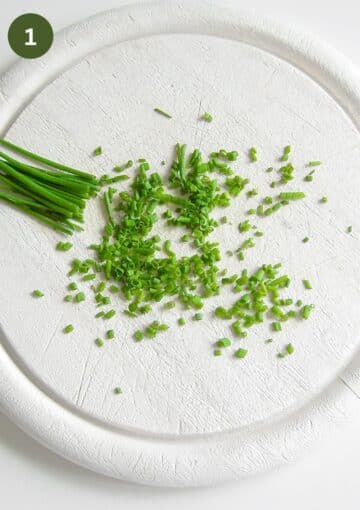
Step #1: Finely chop the fresh chives.
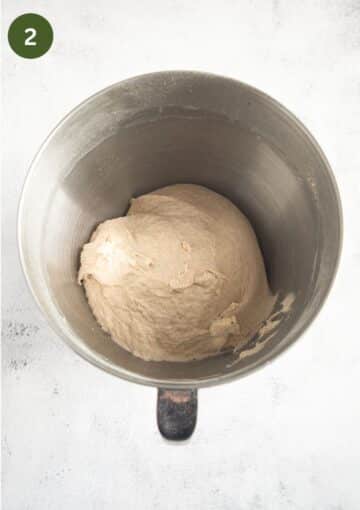
Step #2: Mix the dry ingredients, then add the wet ingredients. Knead until the dough comes together and starts pulling away from the bowl.
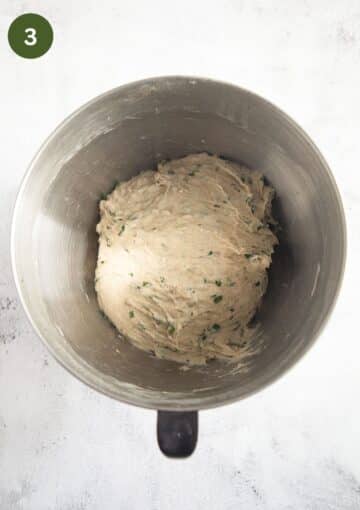
Step #3: Add all the chives and the sunflower seeds and knead again to combine.
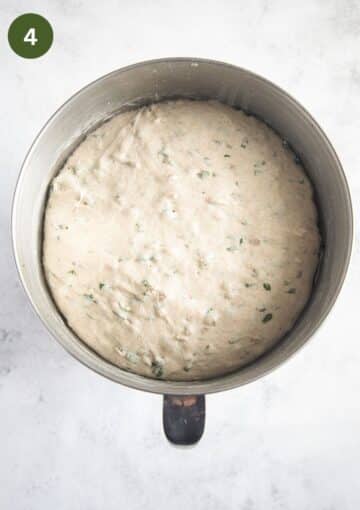
Step #4: Cover the bowl with plastic wrap and let the dough rise until it doubles in size.
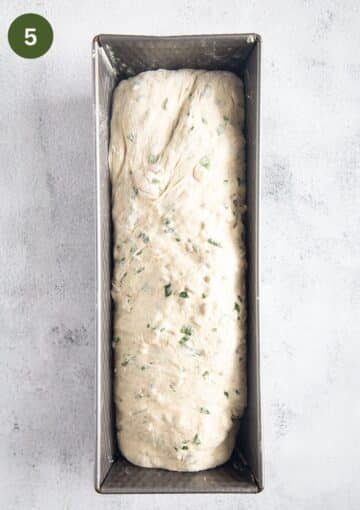
Step #5: Knead briefly on a floured surface, then place the dough in the greased loaf pan.
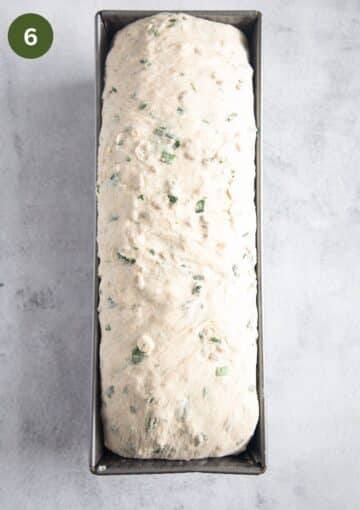
Step #6: Let the chive bread rise again until it is doubled in size and bake it.
Good to know!
Measurements: I highly recommend using the metric system and a digital kitchen scale (the Amazon affiliate link opens in a new tab) to measure the ingredients for the best results. Measuring flour by volume (in cups) can lead to inconsistencies because flour can be packed differently, resulting in too much or too little. A kitchen scale ensures precise measurements every time.
To replace instant yeast with active dry yeast, use 25% more active dry yeast, so in this case, you’ll need 18 g (about 2 ½ teaspoons) of active dry yeast. Proof it by dissolving it in warm water with a pinch of sugar for 5-10 minutes before adding it to the dough.
To replace instant yeast with fresh yeast, use a cube of about 1.5 oz (42 g). Dissolve the fresh yeast in warm water before adding it to the dough. The dough with fresh yeast will likely rise faster, so check it earlier; it should double in size, but not more than that.
Recipe FAQs
Sure. Use white spelt flour instead of all-purpose and whole spelt flour instead of whole wheat. Try this amazing No Knead No Rise Spelt Bread, too.
Yes, you can mix and knead the dough by hand. Just combine the ingredients and knead the dough on a floured surface for about 6-7 minutes or until smooth and elastic. However, using a stand mixer is easier since the dough is quite soft and sticky.
Absolutely! You can add herbs like parsley, thyme, or rosemary for extra flavor. You can also replace the chives with wild garlic if available. Check out this Garlic Bread Baguette, too – it’s the best!
How to store the bread?
Store the chive bread in an airtight container or wrap it tightly in plastic wrap. It can be kept at room temperature for 2-3 days or in the fridge for up to a week.
Freeze: Allow it to cool completely, then wrap it tightly in plastic wrap and foil before freezing. Thaw the chive bread at room temperature or toast slices directly from the freezer. You can also freeze slices and toast them as needed.
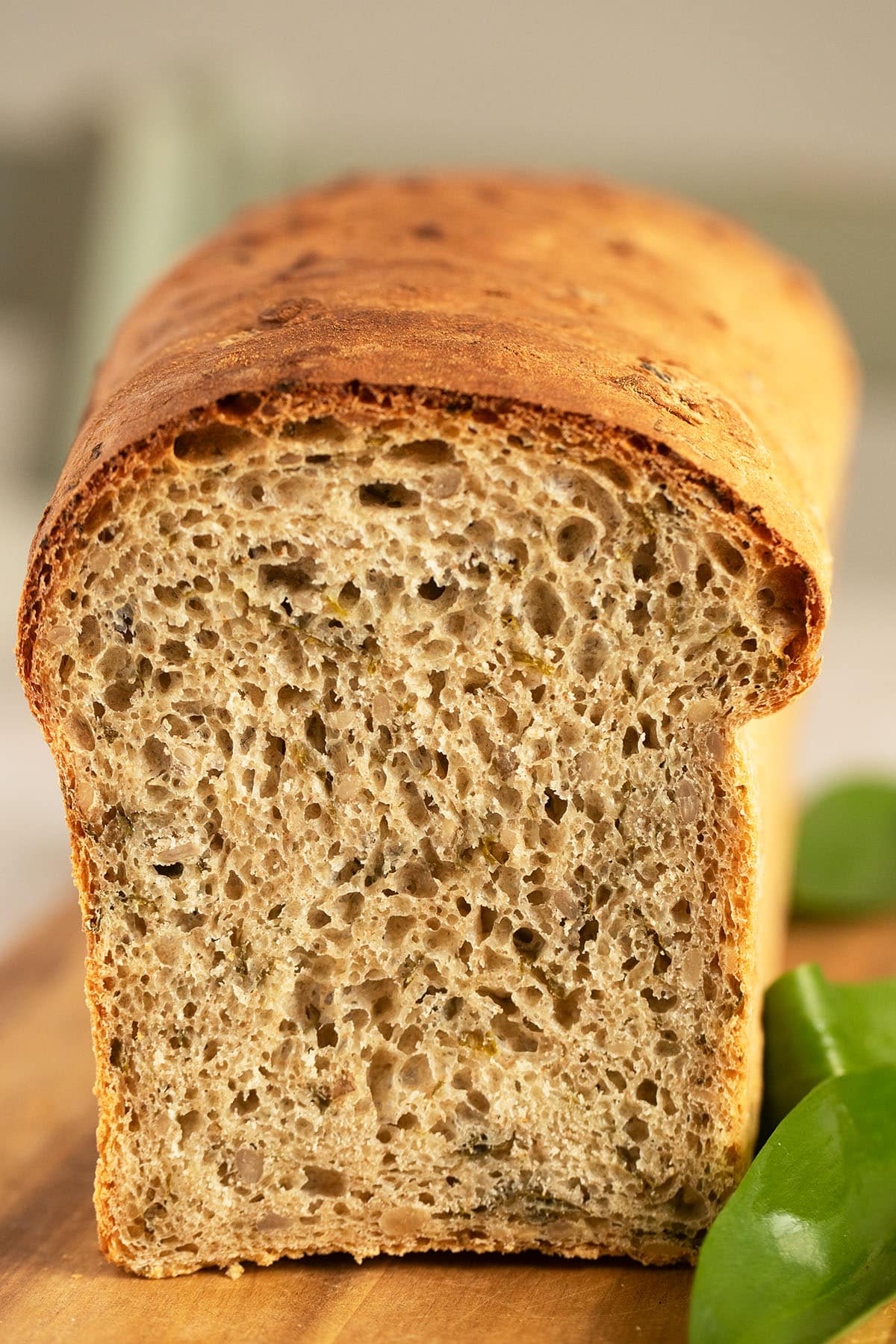
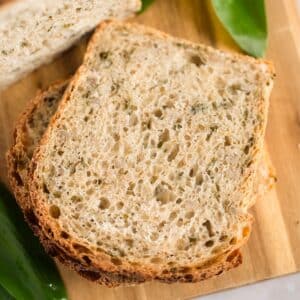
Easy Chive Bread
Equipment
- Stand mixer Note 1
- Loaf pan about 12 inches/ 30 cm long
Ingredients
- 1 large bunch of fresh chives about 1.8 oz/ 50 g
- 3 ⅔ cup all-purpose flour 16 oz, Note 2
- 2 cups whole wheat flour 9 oz
- 2 ½ teaspoons fine sea salt
- 1 teaspoon granulated sugar
- 2 packets of instant yeast 4 ½ teaspoons, Note 3
- 2 cups lukewarm water
- 1 ½ tablespoons apple cider vinegar
- 2 teaspoons dried chives
- ½ cup sunflower seeds
- a a small piece of butter for greasing the loaf pan
Instructions
- Chives: Chop the fresh chives finely and set them aside.1 large bunch of fresh chives
- Mix ingredients: Mix both types of flour, instant yeast, salt, and sugar in the bowl of the stand mixer. Add lukewarm water and vinegar.3 ⅔ cup all-purpose flour + 2 cups whole wheat flour + 2 ½ teaspoons fine sea salt + 1 teaspoon granulated sugar + 2 packets of instant yeast + 2 cups lukewarm water + 1 ½ tablespoons apple cider vinegar
- Knead the dough on medium speed for 5-6 minutes until it comes together and starts pulling away from the bowl. Add the sunflower seeds and chopped dried chives, then knead for another minute. The dough should remain slightly sticky.2 teaspoons dried chives + ½ cup sunflower seeds
- Let rise: Cover the bowl with plastic wrap and let the dough rise for 15-20 minutes or until doubled in size. The rising time may vary depending on the type of yeast and the temperature of your kitchen. If it hasn’t doubled in size by then, allow an additional 5-10 minutes.
- Preheat oven: In the meantime, grease the loaf pan with some butter and preheat the oven to 400°F/ 200°C. Place an oven-safe bowl of water on the bottom of the oven (Note 4).a a small piece of butter
- Knead the dough briefly on a lightly floured surface, using just enough flour to prevent it from sticking to your hands. Avoid adding too much flour; the dough should remain soft.
- Let it rise again: Transfer the dough to the greased loaf pan. Let it rise until it doubles in size again; it should take about 10 minutes, but check.
- Bake the chive bread in the preheated oven for about 50 minutes or until the top is golden brown. Check after 30-40 minutes; if the bread is browning too quickly, cover it loosely with foil. Remove it from the loaf pan, place it on its side on the oven rack, and bake for an additional 5-10 minutes to brown the bottom.
- Let the bread cool completely, or at least 30-60 minutes, before slicing.
Notes
- Knead without a stand mixer: Combine the ingredients in a bowl and knead briefly until well mixed. Transfer the dough to a floured surface and knead for 6-7 minutes or until smooth and elastic. However, using a stand mixer is easier since the dough is quite soft and sticky.
- Measurements: I highly recommend using a digital kitchen scale (the Amazon affiliate link opens in a new tab) to measure the ingredients for the best results.
- Yeast: If using active dry yeast, you will need 18 g (about 2 ½ teaspoons). Proof it by dissolving the yeast in warm water with a pinch of sugar for 5-10 minutes before adding it to the dough. If using fresh yeast, you will need 1.5 oz/ 42 g. Dissolve it in warm water before adding it to the dough. The dough will likely rise faster with fresh yeast, so check it earlier; it should double in size, but not more than that.
- Bowl of water: The steam helps create a moist environment, which keeps the bread's crust soft and prevents it from becoming too hard.

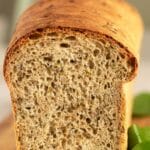
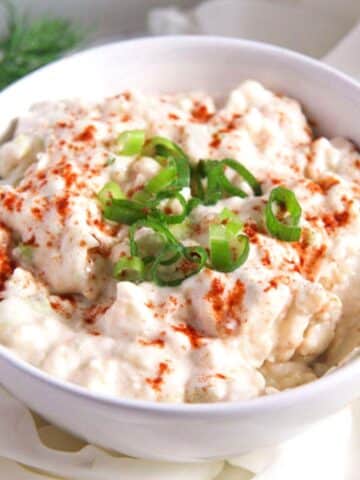

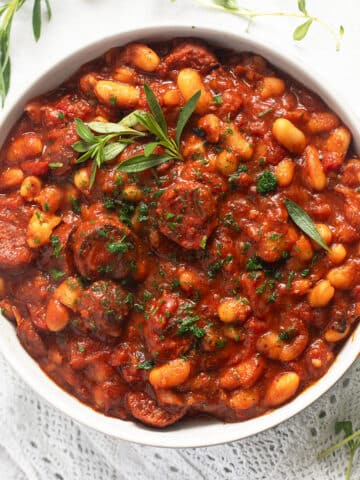
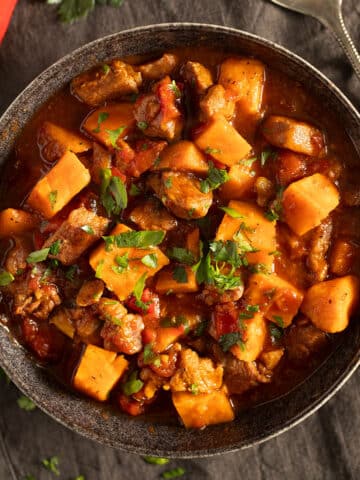
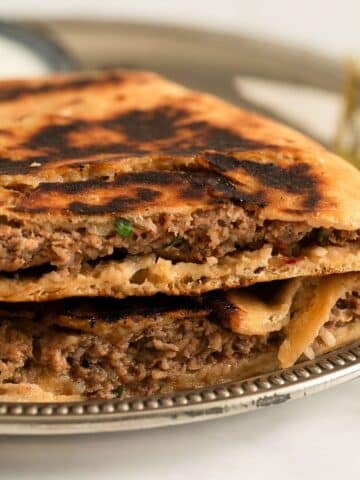
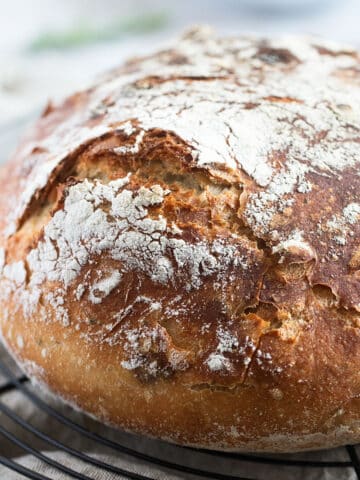
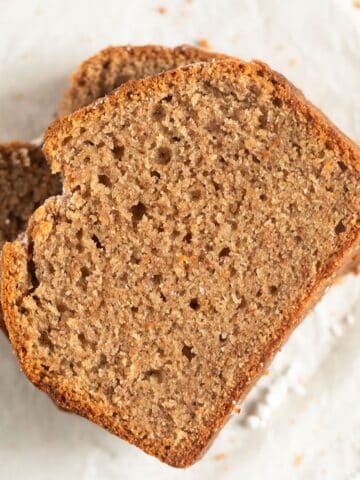
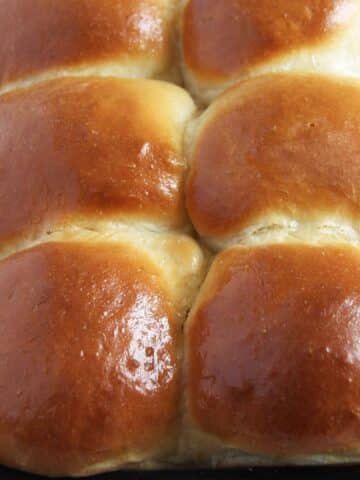

Leave a Reply